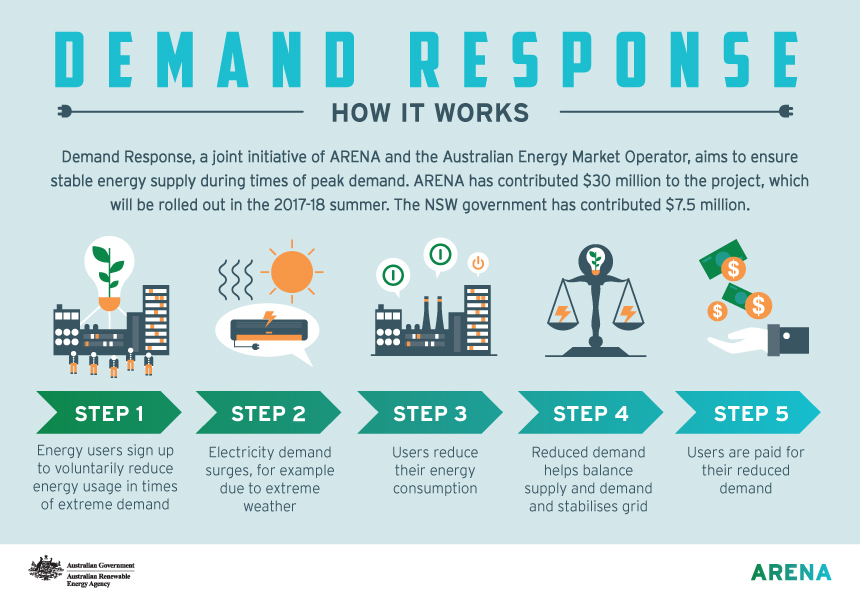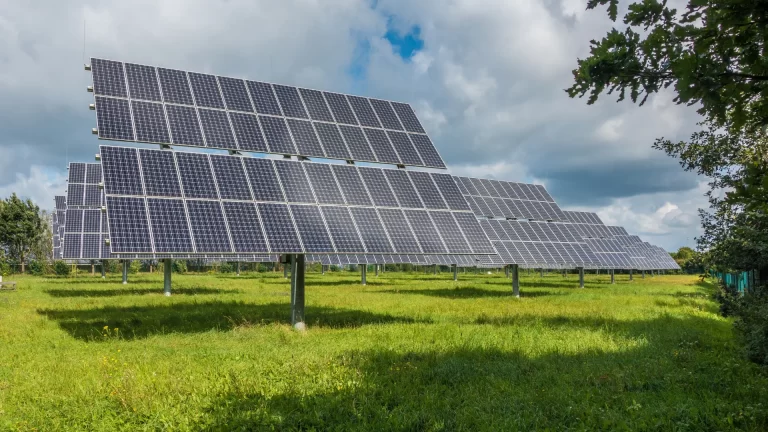Introduction
Demand response is a strategic and adaptive approach used in the energy sector to manage electricity consumption effectively, especially during peak pressure. This innovative strategy involves making real-time adjustments to energy usage in response to signals such as price fluctuations, grid reliability concerns, or other external factors. Initiatives to meet demand are frequently supported by incentives or automated systems, enabling businesses and consumers to actively contribute to grid stability and efficiency.
How Demand Response Works

Demand response: how it works. Source.
1. Identification of Peak Demand Periods
It starts by identifying peak demand periods, usually when electricity consumption is highest. These periods often coincide with specific times of day, seasons, or events when energy demand exceeds available supply.
2. Signalling Mechanisms
Various signals prompt the implementation of demand response measures. These signals can include changes in electricity prices, notifications from grid operators about potential reliability issues, or other market-driven factors. As a result of these signals, participants in demand response programs adjust their energy consumption patterns.
3. Adjusting Energy Consumption
Participants in programs can adjust their energy consumption through several means, including:
- Shifting Usage: Temporarily moving energy-intensive activities to non-peak hours.
- Load Shedding: Reducing non-essential electricity usage or shutting down specific equipment temporarily.
- Onsite Generation: Utilizing on-site generation sources, such as backup generators or renewable energy systems.
4. Incentives and Compensation
To promote active involvement, participants in programs are frequently provided with incentives or compensation. These may include reduced energy costs during off-peak hours, direct financial incentives, or other rewards for contributing to grid stability.
Advantages of Demand Response
Grid Reliability and Stability
Demand response is crucial for improving grid reliability and stability. It actively manages peak demand, preventing grid congestion and reducing the risk of blackouts or other disruptions.
Cost Savings
Both consumers and businesses can save costs by participating in programs. This can be achieved by shifting energy usage to off-peak hours or responding to price signals.
Environmental Impact
Demand response promotes environmental sustainability by encouraging more efficient use of existing energy resources. It minimizes the need for additional power generation during peak periods, thereby reducing greenhouse gas emissions.
Challenges and Considerations
Even though there are numerous benefits, there are challenges and considerations to address, including:
- Technological Integration: Implementation may require advanced metering infrastructure and automated systems.
- Consumer Awareness: Effective participation relies on consumers’ understanding of and engagement with demand response programs.
Conclusion
Demand response is a dynamic and effective strategy in the energy sector that aligns with the goals of grid reliability, cost savings, and environmental sustainability. As the energy landscape continues to evolve, meeting the demand will likely play an increasingly crucial role in achieving a more resilient and responsive electricity grid.
Frequently asked questions
What is demand response, and why is it essential in the energy sector?
It is a strategic approach used in the energy sector to manage electricity consumption during peak demand periods. It involves adjusting energy usage in real-time in response to signals such as price changes or grid reliability concerns. This strategy is crucial for optimizing grid performance and ensuring stability.
How does demand response work?
It begins by identifying peak demand periods, typically when electricity consumption is highest. Participants receive signals, such as price fluctuations or reliability notifications, prompting them to adjust energy consumption.
to adjust energy consumption.
Methods include shifting usage to off-peak hours, load shedding, or utilizing on-site generation. Participants are often incentivized for their contributions.
What are the advantages of participating in demand response programs?
Participating in programs has several advantages, including improving grid reliability and stability, saving costs for consumers and businesses through off-peak usage, and promoting efficient energy resource utilization while reducing emissions.






